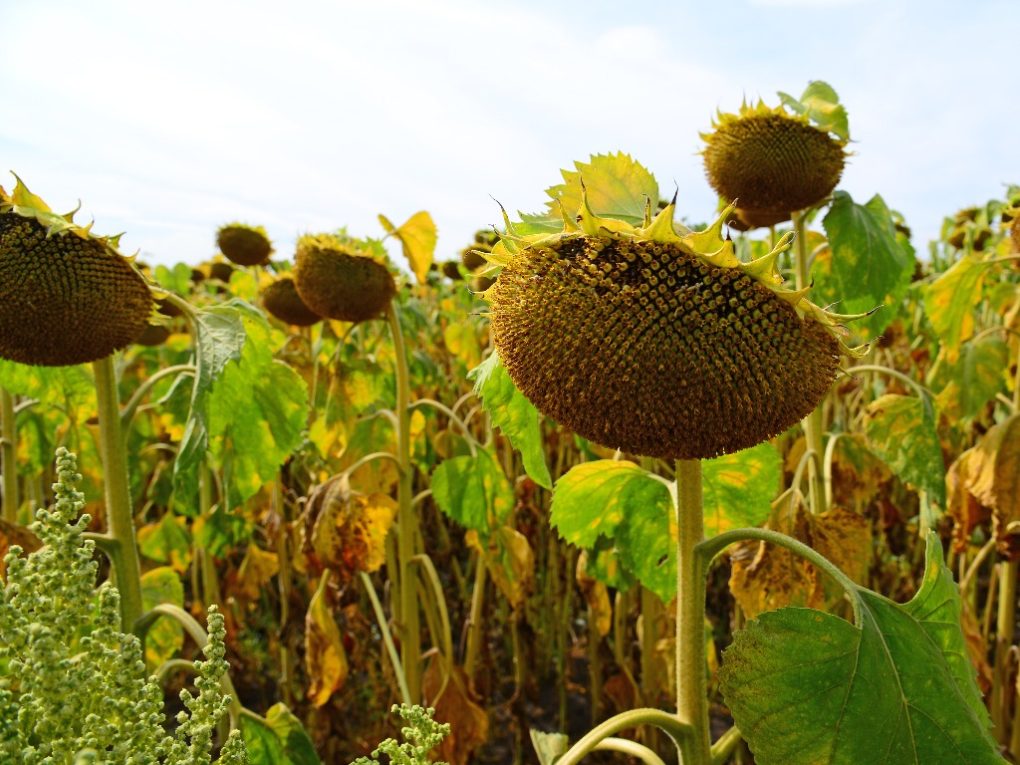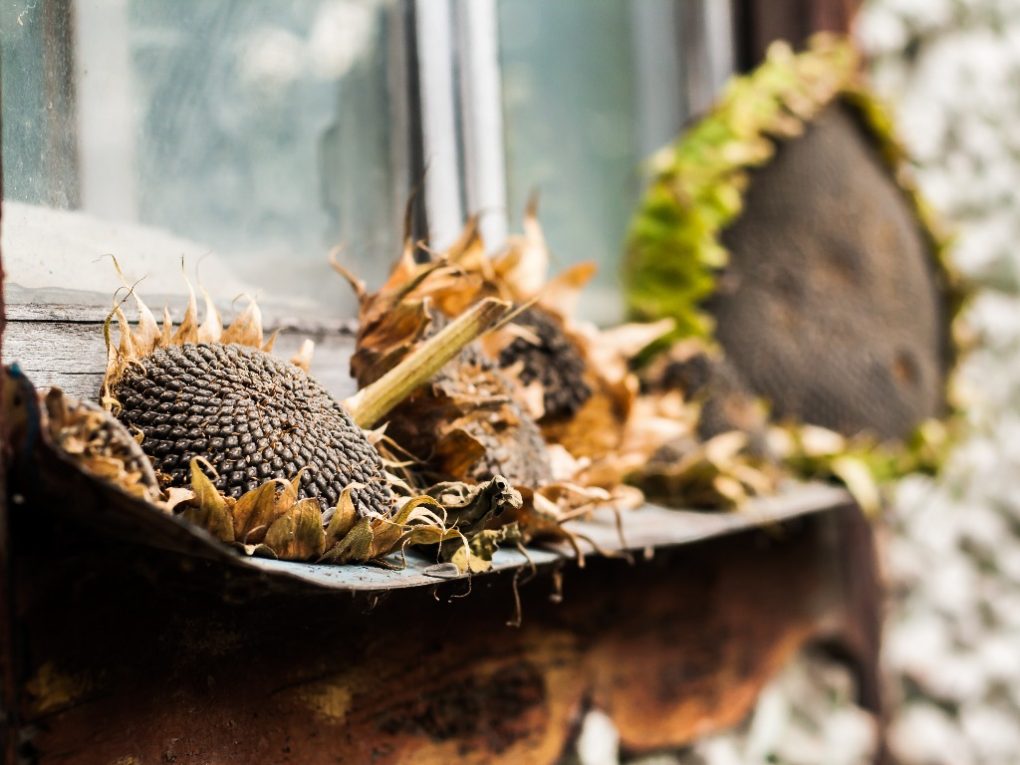When Are Sunflower Seeds Ready to Harvest: What You Need to Know When Harvesting Sunflower
Sunflower seeds are ready to harvest when the flower heads have fully matured and the petals have wilted and fallen off, according to NDSU Agriculture, exposing the back of the flower head. This typically occurs 30 to 45 days after the flowers bloom, depending on the variety and growing conditions. To check if it is for harvest, gently press on the back of the flower head with your fingers.

Table of Contents
Tips When Harvesting Sunflower Seeds
Timing
Timing is one of the most important factors when harvesting sunflower seeds. It would help to wait until the seeds were fully mature and dried out on the plant before harvesting them. This typically occurs 30 to 45 days after the flowers bloom, depending on the variety and growing conditions.
To determine if the seeds are ready for harvest, look for the following signs:
- The back of the flower head has turned yellow or brown.
- The petals have wilted and fallen off.
- The seeds feel firm to the touch.
If you harvest the seeds early enough, they may be developed and have less flavor or nutritional value. If you harvest the seeds early enough, they may stay on the plant or become moldy, reducing their quality. So, it’s important to time your harvest carefully to ensure you get the best possible seeds.
Use Sharp Tools
Using sharp tools is also important when harvesting sunflower seeds. For example, a sharp pair of pruning shears or a sharp knife will make it easier to cut through the stem of the flower head and prevent damage to the seeds.
If you use dull or rusty tools, you may crush the stem and damage the seeds, reducing their quality. This can also make the harvesting process more difficult and time-consuming. So, sharpen your tools before harvesting and ensure they are clean and rust-free to get the best possible seeds.
Additionally, it would help if you made clean cuts when harvesting the flower heads. A clean cut will help the flower head to dry out more quickly and reduce the risk of disease or mold. After cutting the flower heads, you can remove any excess foliage or stem to make them easier to handle and store.
Hang the Flower Heads to Dry
After harvesting the sunflower heads, it’s important to dry them out before removing the seeds. Then, drying the heads will help the seeds to separate more easily and reduce the risk of mold or rot during storage.

One of the best ways to dry sunflower heads is to hang them upside down in a warm, dry place such as a garage or shed. You can tie a piece of twine or string around the stem of the flower head and hang it from a hook or nail. Leave enough space between the flower heads so that air can circulate them.
Choosing a location that is well-ventilated and away from direct sunlight is important to prevent the seeds from overheating or becoming damaged. Depending on the humidity and temperature in your area, it may take a week or two for the flower heads to dry out completely. Once the flower heads are fully dry, the seeds will easily separate from the head. You can gently rub them between your fingers or use a fork to scrape them out.
Be Gentle
When removing the seeds from the sunflower head, it’s valuable to be gentle to avoid damaging them. Here are some tips for gentle seed removal:
- Use your fingers or a fork: You can use your fingers to rub the seeds off the sunflower head or use a fork to scrape them out gently. Don’t apply too much pressure, which can crush the seeds.
- Work in small batches: To avoid damaging the seeds, working in small batches is a good idea. This will allow you to be more careful and precise with your movements.
- Remove any debris: Before removing the seeds, remove any remaining debris or plant matter from the flower head. This will make it easier to see and access the seeds.
- Store the seeds carefully: Once you’ve removed them, store them in an airtight container in a cool, dry place to keep them fresh for longer. Handle them gently when transferring them to the container to avoid crushing or damaging them.
Rinse and Dry the Seeds
After removing the seeds from the sunflower head, it’s a good idea to rinse them to remove any remaining debris or plant matter. Here’s how to rinse and dry the seeds:
- Place the seeds in a colander: Put the seeds in a colander and rinse them under cool running water. Use your fingers to rub the seeds and remove any remaining debris gently.
- Spread the seeds to dry: Once clean, spread them out on a baking sheet or flat surface. Be sure to remove any excess water with a paper towel or cloth.
- Allow the seeds to dry completely: Place the baking sheet in a warm, dry place and allow the seeds to dry completely. This can take anywhere from a few hours to a day or more, depending on the humidity in your area.
- Stir the seeds occasionally: To ensure they dry evenly, stir them occasionally with a spoon or your hands.
- Store the seeds properly: Once completely dry, store them in an airtight container in a cool, dry place. You can also freeze the seeds to extend their shelf life.
Store the Seeds Properly
Proper storage is important to keep your sunflower seeds fresh and flavorful for as long as possible. Here are some tips for storing sunflower seeds:

- Use an airtight container: Store the seeds in a container, such as a glass jar or plastic container with a tight-fitting lid. This will help to prevent moisture and air from getting in and spoiling the seeds.
- Keep the seeds in a cool, dry place: Sunflower seeds must be stored in a cool, dry place away from direct sunlight. A pantry or cupboard is a good place to store them.
- Don’t store the seeds near strong odors: Sunflower seeds can easily absorb odors, so avoid storing them near strong-smelling foods such as onions or garlic.
- Freeze the seeds for long-term storage: If you want to store them longer, you can freeze them in an airtight container. The seeds will keep for several months in the freezer.
Ways to Use Your Sunflower Seeds After Harvesting
- Roasted snacks: Roasting sunflower seeds is a popular way to enjoy them as a snack. Toss the seeds in oil and salt and roast them in the oven or stovetop until they are crispy and golden brown.
- Salads and grain bowls: Sunflower seeds can add a delicious crunch to salads and grain bowls. Sprinkle them on your favorite salad or bowl for added texture and flavor.
- Baking: Sunflower seeds can be used in various baking recipes, including bread, muffins, and cookies. They can be used as a substitute for other nuts or seeds in recipes.
- Pesto: Sunflower seed pesto is a tasty and budget-friendly alternative to traditional pesto. Blend sunflower seeds with garlic, olive oil, basil, and Parmesan cheese to make a delicious spread or sauce.
- Smoothies and yogurt bowls: Sunflower seeds can be blended into smoothies or sprinkled on top of yogurt bowls for added nutrition and texture.
- Homemade nut butter: Sunflower seeds can be ground into delicious, creamy nut butter. Blend the seeds in a food processor with oil and salt until they are smooth and creamy.
